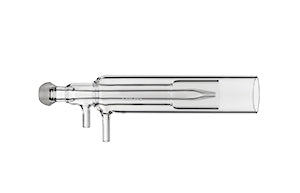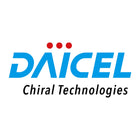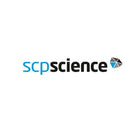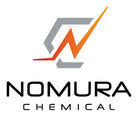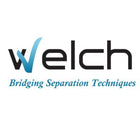Quartz Torch, Organics, 1.0mm, Shimadzu 7500 / 8100 / 9000 / 9800
Glass Expansion Part Number: 30-807-0519
Equivalent to OEM Part Numbers: 204-77296, 20477296
Torch Options for Shimadzu:
| Part Number | Product Description |
| SAFEGLOVE-lge | Safety Gloves, Large |
| SAFEGLOVE-med | Safety Gloves, Medium |
| SAFEGLOVE-sml | Safety Gloves, Small |
| 30-808-1090 | Quartz Torch, 1.5mm, Shimadzu ICPM-8500 |
| 30-808-9986 | Quartz Torch, 1.2mm, Shimadzu ICPM-8500 |
| 30-807-0567 | Quartz Mini Torch for Shimadzu ICPMS-2030 |
| 30-807-0518 | Quartz Torch, High TDS, 1.8mm , Shimadzu 7500/8100/9000/9800 |
| 30-807-0519 | Quartz Torch, Organics, 1.0mm, Shimadzu 7500/8100/9000/9800 |
| 30-807-0534 | Quartz Mini Torch, Shimadzu 9000/9800 |
| 30-807-0564 | Quartz Torch, High TDS, 2.0mm, Shimadzu 7500/8100/9000/9800 |
| 30-808-1091 | Quartz Torch, Shimadzu 7000 |
| 30-808-1179 | Quartz Torch, 1.5mm, Shimadzu 7500/8100 |
| 30-808-8039 | Semi Demountable Torch with Alumina Injector for Shimadzu 7500/8100/9000 |
| 30-808-3910 | D-Torch for Shimadzu ICPE-9800 |
| 31-808-1258 | Semi Demountable Torch Body SHZ7500 |
| 31-808-3964 | Tapered Alumina Injector 1.5mm x 101.5mm |
| 31-808-3965 | Tapered Quartz Injector 1.0mm x 101.5mm |
| 31-808-3966 | Tapered Quartz Injector 1.5mm x 101.5mm |
| 31-808-3967 | Tapered Quartz Injector 1.8mm x 101.5mm |
| 31-808-0835 | Tapered Alumina Injector 1.0mm |
| 31-808-3001 | Sapphire Injector 2.0mm |
| 31-808-1260 | Semi Demountable Torch Adaptor SHZ7500 |
| 31-808-0013 | Tapered Alumina Injector 1.5mm |
| KCM-14 | Joint Clip B14-Nickel |
| GAZ-04 | GazFit Connectors (pack of 4) - for 4mm OD side arm |
| 31-808-3998 | D-Torch Body Assembly Shimadzu ICPE-9800 |
| 31-808-3072 | D-Torch Injector Adapter Assembly B13 |
| 31-808-2962 | Injector Ferrule for D-Torch |
| 31-808-3912 | Quartz Outer Tube for Shimadzu ICPE-9800 D-Torch |
| 31-808-2818 | Retaining Ring for D-Torch |
Care of Torches - Important Note
HF (hydrofluoric acid) should not be used with glass or quartz. Using any amount of HF will damage the product. Our quartz torches are supplied clean and ready to use. Please do not pre-treat torches with HF.
Handling, Storing and Transporting Torches
Glass Expansion quartz and ceramic torches are made from a high-quality materials, so you should exercise the same care that you would normally use for glass labware. In particular, don't knock a torch against hard objects or leave it unprotected when not in use.
Quartz should be treated with the care that is due to a brittle material. It can fracture and produce sharp, cutting edges, so handle all quartz objects with deliberate movements and don't apply large mechanical forces to them, especially when connecting gas tubes or installing in the torch holder. All quartz torches are supplied in a box with soft sponge foam. This should be used when the torch is placed in storage.
- Don't touch quartz torches with bare hands as this can reduce the torch life.
- Don't use metal or ceramic brushes or scraping tools. Damage is quite likely to result from doing this.
Temperature
If the quartz torch reaches a temperature above the melting point of quartz then clearly it will melt. The most common cause of a melted torch is incorrect argon flow. It is critical that the plasma not contact the quartz and it is the flow of argon that holds the plasma in position and prevents it from contacting the torch. If the argon flows are not set correctly, or if there is an interruption to the flow, or if there is a leak in the argon lines, then it is possible to see an instant torch meltdown. Glass Expansion recommends the use of GazFit connectors for reliable connection of the argon lines to the torch. Improper alignment of the torch within the RF coil is another potential cause of torch degradation. Therefore it is important to ensure proper alignment of the coil when it is replaced. Glass Expansion offers a coil installation and alignment tool to be used with its line of RF coils. If the correct argon flows are maintained and the torch is positioned correctly in the RF coil, then the torch should not melt. However, high temperatures will still contribute to devitrification of the quartz over time. So devitrification is likely to occur faster with those applications where the torch is run at higher temperatures.
Daily Maintenance & Handy Tips
It is good practice to always start and finish use of a torch by nebulizing a mildly-acidic blank solution for several minutes. This ensures that sample deposits or crystals don't form inside the torch injector bore when the solvent inside the injector dries out.
Recommended Cleaning Procedures for Quartz Torches
Contamination of the surface of the quartz, combined with high temperature can lead to reduced torch life. Contamination is most commonly due to deposits of salts, organics or metals from the samples near the end of the outer tube. If this is occurring, the torch should be cleaned regularly.
Organics: Samples containing organic solvents can lead to torch tubes cracking. This is due to the rapid cycling of temperature changes in the plasma whenever this type of sample is introduced. Our only solution to this problem is the use of ceramic tubes that have a much lower coefficient of thermal expansion.
Traditionally, the most common method of removing carbon deposits due to organic samples has been to bake the torch in a muffle furnace at around 500°C. However, this is quite time-consuming and is not feasible for laboratories which do not have a muffle furnace. A fast and simple alternative is to burn off the carbon using a portable hand held propane torch. This method can be used for a one-piece torch or for the outer tube and injector of a demountable torch. It can also be used for the outer tube of the D-Torch. Note that the D-Torch outer tube cannot be heated in a muffle furnace since it has a polymer ferrule attached to it. A wet cloth should be wrapped around the ferrule to prevent it from over-heating when the end of the outer tube is heated in the flame. After cleaning, the outer tube should be stood in a vertical position until it has cooled. Wear safety gloves at all times when cleaning torches and be careful to avoid touching hot surfaces.
Salts: Salt deposits on the outer tube, combined with high temperature, can lead to rapid devitrification of the quartz.
Salt deposits are best removed by soaking the torch or outer tube in a 25% solution (4x dilution) of Fluka RBS-25 (FLUKA25). We recommend that you do not wash the torch in an ultrasonic bath as this may damage the quartz. If contamination of the outer tube is a persistent problem it may be advisable to use a shorter outer tube. Although this may result in some loss of sensitivity, it can also lead to a significant improvement in torch life. Glass Expansion can supply several different types of torch with shorter outer tubes.
Metals: Metallurgical samples with high metal content may result in a metallic film being deposited on the outer tube. This conductive film may interfere with the RF field and should not be allowed to build up. Metallic films are best removed by soaking the tube in acid. The best acid to use is usually the one that was used to prepare the samples (with the exception of HF, of course). To minimize damage to any polymer torch components, we recommend soaking the torch or outer tube only to the level of the deposit. This is done by standing the tube upright in a controlled level of the acid solution.
Do not handle with bare hands. Contamination can also be caused by handling of the quartz with bare hands. It is important to always use safety gloves when handling quartz torch components. If the quartz components are handled with bare hands, body oils may be deposited on the surface. These oils can accelerate devitrification of the quartz and significantly reduce the torch lifetime.
Product title
Vendor
|
Product title
Vendor
|
Product title
Vendor
|
Product title
Vendor
